CHAPTER 1
1. Estimated vs Entered Hours
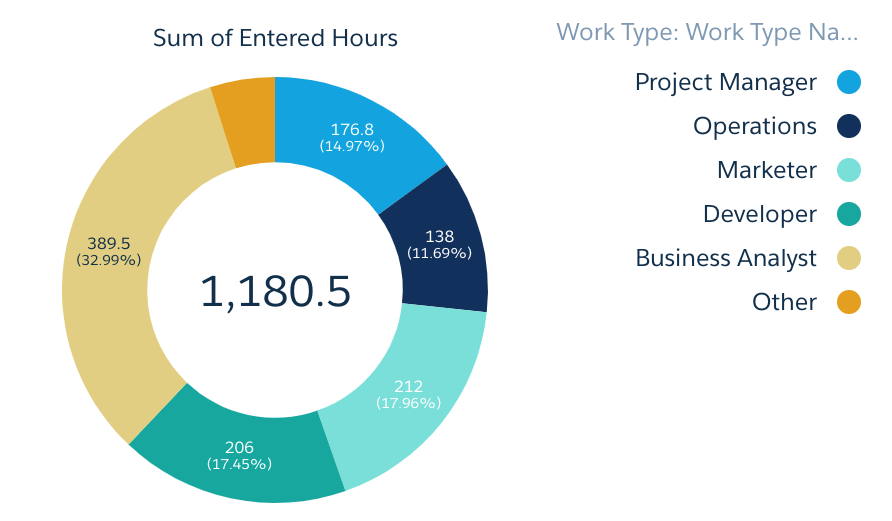
What it shows
How much time has been entered on tasks compared to the original estimates, split out by skill / work type of your team.
Why it matters
Time tracked is a key metric for determining your project profitability. If your team is taking longer than estimated to complete work, your bottom line will suffer, and your projects run the risk of being delivered late, disappointing your customers.
CHAPTER 2
2. Hours Burned by Completion %
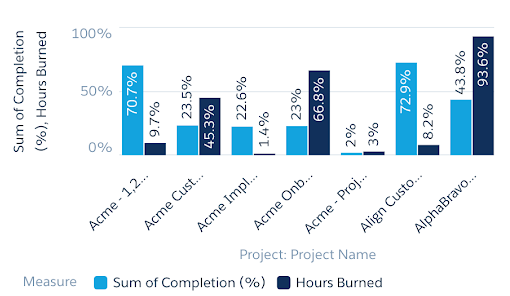
What it shows
How far along a Project is in completion terms, compared to how many hours have been burned / used against original estimates.
Why it matters
This report gives a great overview of how each Project is tracking towards completion in contrast to how much of the pool of estimated hours have been used to date. It provides critical early warning signs for managers alerting them when the estimated hours for a project are about to be exceeded.
CHAPTER 3
3. Project Burndown Metrics

What it shows
How multiple Projects are tracking from a burndown perspective along with the forecasted Project profitability at completion based on current progress against burndown.
Why it matters
This report is a more advanced take on burndown metrics, adding in a financial forecast component to the effort remaining and tying it back into Project profitability. This gives executives a key insight into how a Project’s performance will impact the bottom line.
CHAPTER 4
4. Budgeted vs Actual Costs
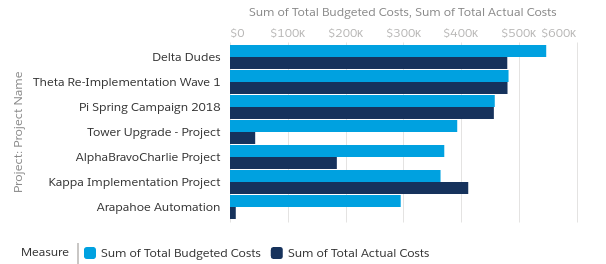
What it shows
Budgeted vs actual costs across a portfolio of Projects.
Why it matters
Tracking your actual spend against your budgeted spend for Projects is a key component towards overall Project profitability. With Cloud Coach, you can track both labor and non-labor costs against your Projects.
CHAPTER 5
5. Project Margin

What it shows
The profit margin of Projects against the Opportunity Sale Amount.
Why it matters
If you want to grow your business, you need to be delivering Projects profitably on an ongoing basis. By capturing Project profit margin against Opportunities, you can drill down to find out what types of sales / lines of business will bring the most revenue growth to your business.
CHAPTER 6
6. Unassigned Project Tasks
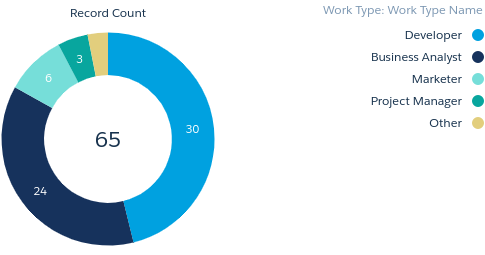
What it shows
Report showing unassigned tasks split out by the work type / skill needed to perform each task.
Why it matters
If you have unassigned work, you risk task and Project delivery dates slipping. Ensuring your Projects are fully resourced with the right people with the right skill sets means more on-time delivery for your business and happier customers.
CHAPTER 7
7. Planned vs Realized Revenue Recognition
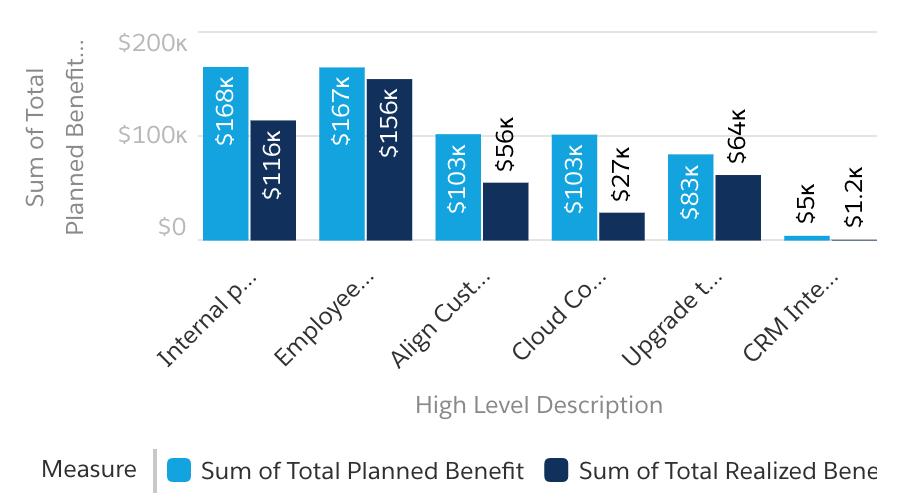
What it shows
The planned vs realized revenue that can be recognized against each Project.
Why it matters
Gives you insight into how much revenue has been realized for each Project and what still needs to be delivered. This helps your CFO, know what revenue can be recognized and when, for financial accounts and statements.
CHAPTER 8
8. RAID by Project

What it shows
Project ‘Controls’ including Risks, Issues and Change Requests grouped by Project.
Why it matters
Great Project delivery involves managing the intangibles that come up along the way, such as identifying and mitigating Risks, managing Issues that arise and capturing Change Requests along with associated cost and profitability impacts. This report gives insight into the ‘Controls’ that need managing across your portfolio.
CHAPTER 9
9. My Team’s Utilization

What it shows
The utilization metrics of your team against their target hours for last week.
Why it matters
Employee costs make up a large percentage of a company’s cost base. Making sure your employees are used effectively and efficiently has a huge impact on your business’ bottom line. Resource utilization is a measure of how your resources are contributing toward the productive goals of your company.
CHAPTER 10
10. Utilization and Billability

What it shows
Report building on an employee’s utilization, adding in billability metrics.
Why it matters
A resource might be meeting your utilization metrics while working on items that aren’t directly billable, such as supporting sales. This report lets you measure not just the utilization of the team but also their billability, so you can make sure that the whole of your services team are contributing to your bottom line.
Thank you for reading our Report eBook. If there are any reports we haven’t featured that you’d like us to include, contact us at [email protected].






















